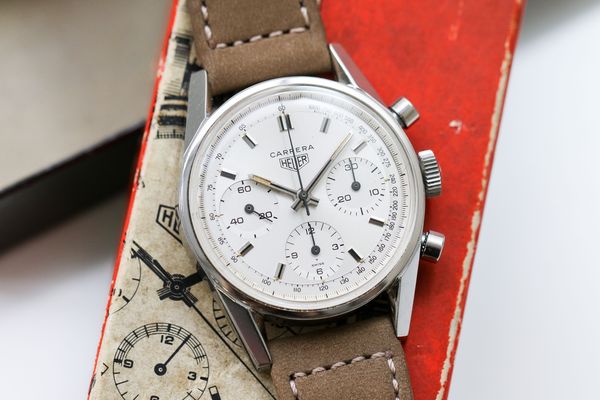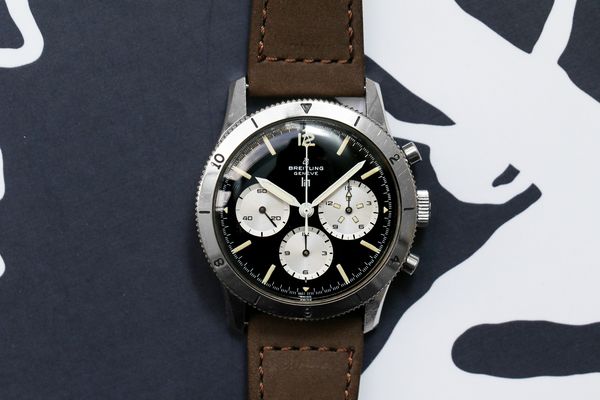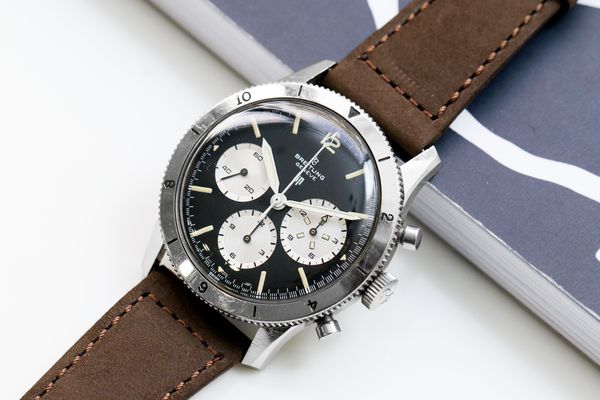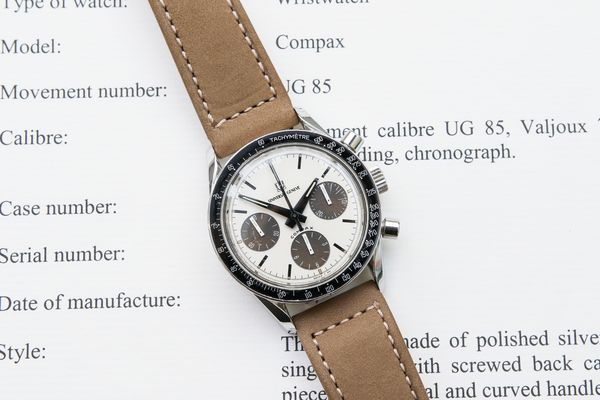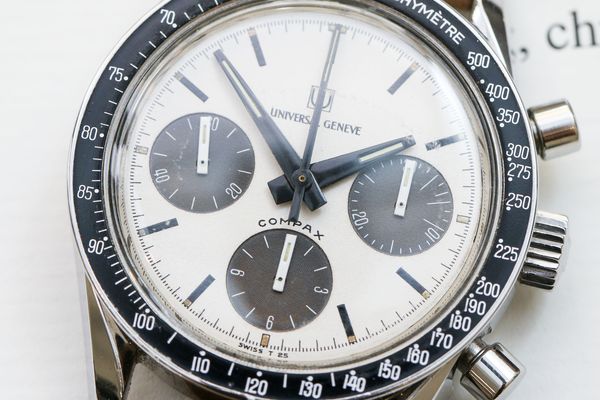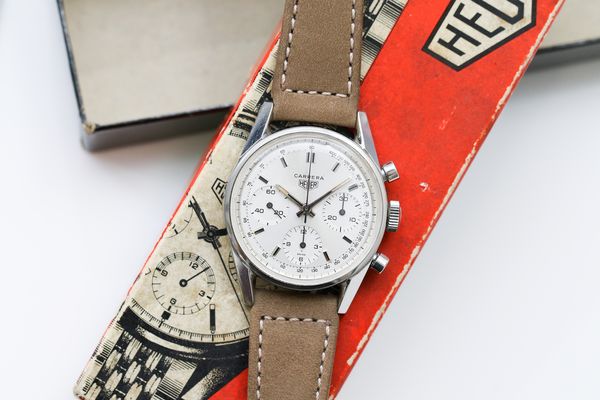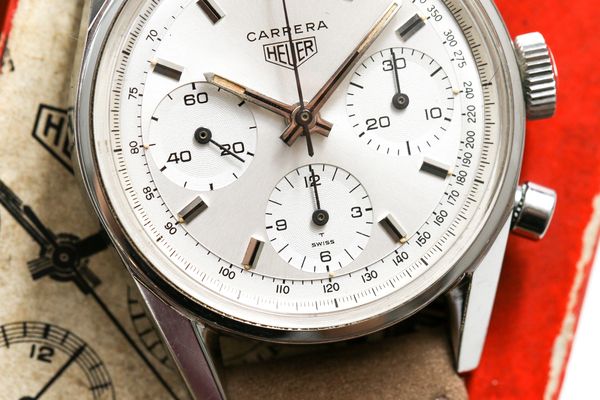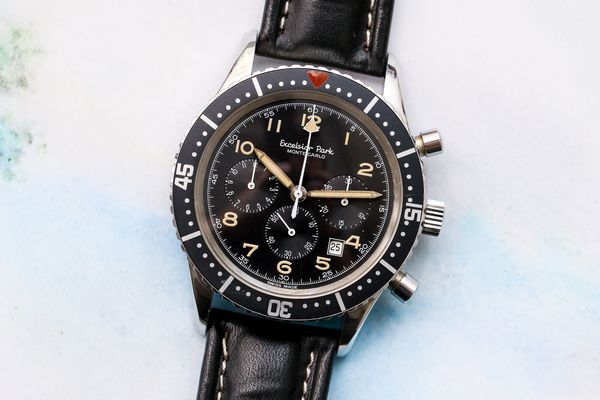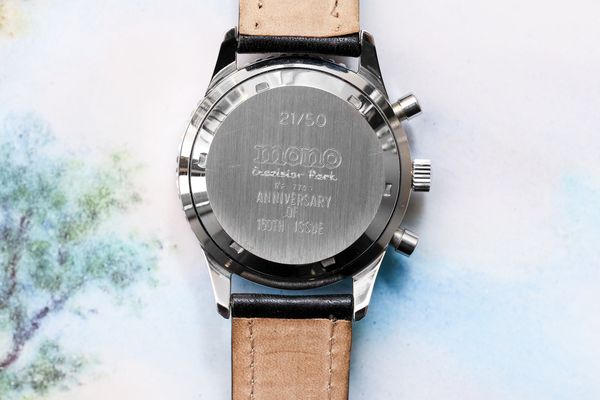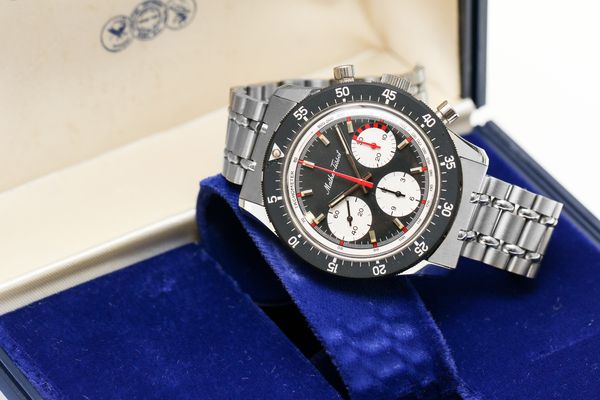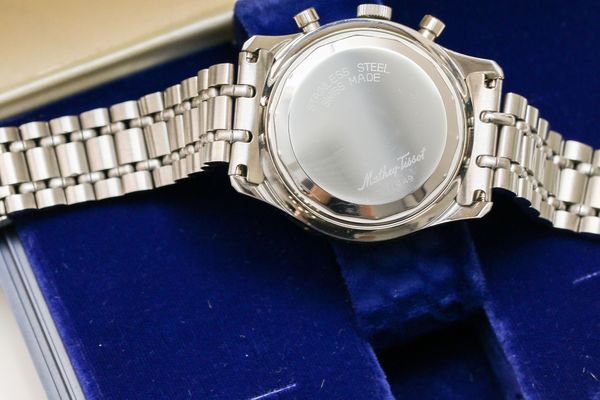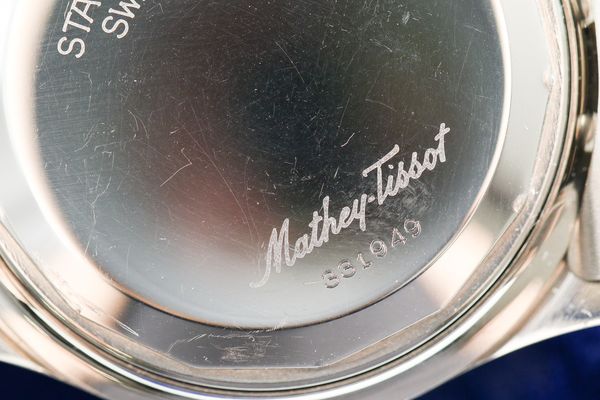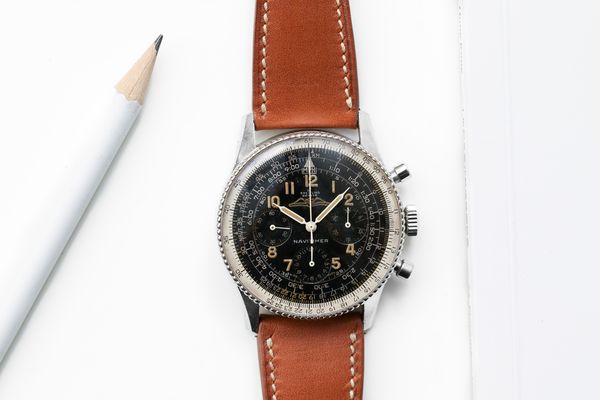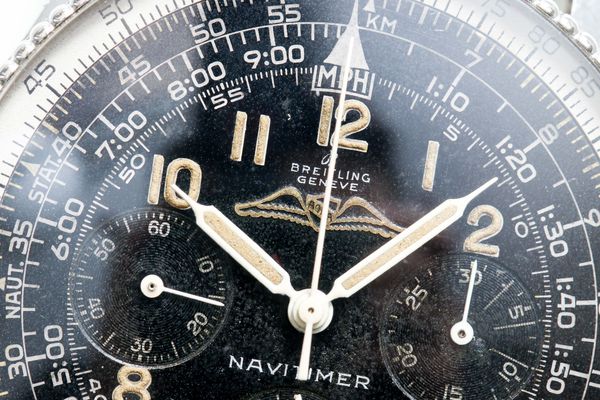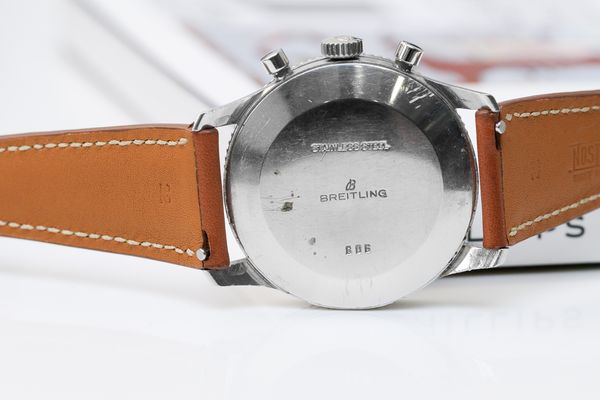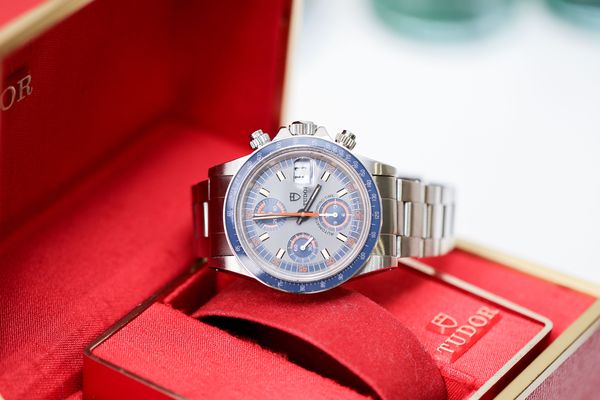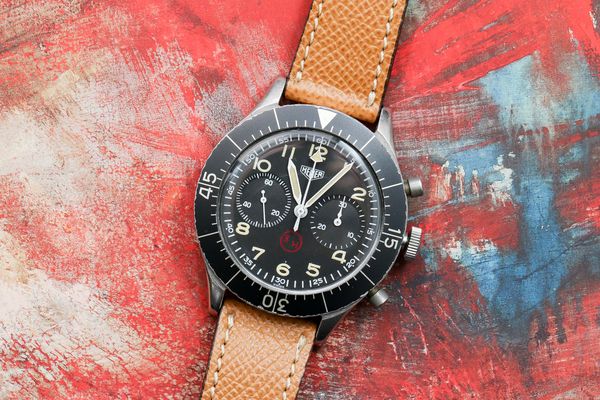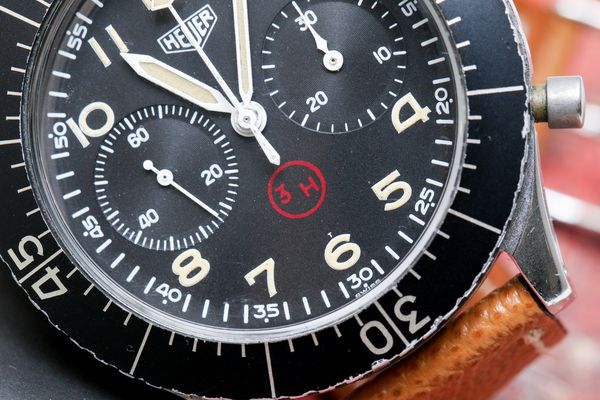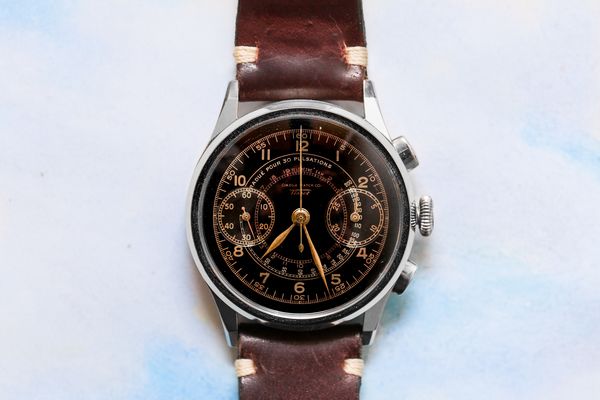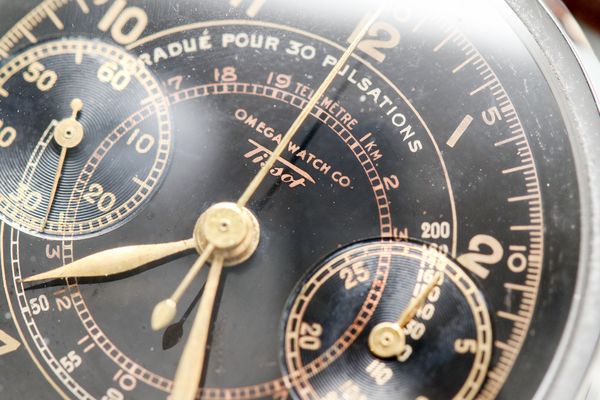- By Kevin Cureau
To outsiders, auctions can appear seemingly out of reach for more humble collectors, especially when news headlines mainly cover high prices and world records achieved during live sales. The Phillips Hong Kong Watch Auctions sets itself apart by offering many desirable timepieces at very accessible prices, highly participating to the attractiveness of the Asian auctions. Today we look at ten vintage chronograph pieces from the upcoming Hong Kong Watch Auction: X, all priced under USD20,000.
Lot 1023 - Breitling Co-Pilot ref. 765CP
The Breitling AVI timepieces were initially launched in 1953 with a large case dimension at the time measuring 41mm diameter. With tremendous history in manufacturing pilot’s timepieces, vintage Breitling timepieces have remained relevant and attractive even in today’s standards due to its distinct tool watch appeal and its reliable Venus based chronograph movements. An element of charm, and an important detail for any watch enthusiast, comes from its larger 15 minute register with luminous markers. Back in the 1950s, these were of precious help for pilots in their final plane check, as they should not exceed fifteen minutes.
What makes vintage watches interesting is the personal history usually associated with them. Here the watch comes directly from the family of the original owner who used to be an organiser of the Tour de France in the 1960’s and bought the present watch during one of the races. It’s not hard then to imagine the owner travelling to every corner of France, and witnessing the domination of cyclists such as Jacques Anquetil or Eddy Merckx, while wearing his Breitling CoPilot.
The present example of a ref. 765 CP “Co-Pilot” is presented in attractive overall condition boasting a nice case with uninterrupted bevels. Furthermore, it is double signed by French retailer Lip, enhancing its rarity to a heightened level.
Lot 842 - Universal Genève Compax “Nina Rindt”
Nicknames are omnipresent in the world of vintage watches and provide a quick way to immediately identify a timepiece when conversing with fellow collectors. The most famous of them all is of course the Rolex “Paul Newman” Daytona but today we have another timepiece with a “panda dial” which also has a connection to racing: the Universal Genève Compax “Nina Rindt.”
The nickname “Nina Rindt” comes from the Finnish model and widow of famed Austrian Formula One driver, Jochen Rindt, the only person to ever posthumously win the Formula One World Drivers' Championship, who was seen wearing the model, and collectors chose that name because of her cool sexy demeanor.
By the 60’s and 70’s, Universal Genève had turned to using third-party movement suppliers instead of still producing the beautifully manufactured in-house chronograph movements they were known for in the previous decades. As a result, this situation gave the brand more time to devote to designing beautiful and sporty chronograph pieces. The "Nina Rindt" is part of it with its attractive bi-colored dial, sunken sub-dials with large hands, and lume dots on the periphery of the dial.
One of the finest Universal Compax chronographs to be offered in recent years, this example is highlighted by its excellent condition and with attractive “tropical” subsidiary dials. This particular lot falls into the serial range of 2.569 million, where batches of dials are believed to be found to develop tropical effect; making this configuration rare and desirable. This is an opportunity to buy a stunning and very rare vintage chronograph watch with mesmerising tropical subsidiary dials.
Lot 841 - Heuer Carrera ref. 2447T
As one of the iconic models of the Heuer brand, the Carrera takes its name from the famous Carrera Panamericana race through Mexico. Built to time race-car events, this sporty yet tasteful watch fully displays Heuer’s genetic code, an element that made Heuer a popular brand among racetrack aficionados. Heuer chronograph wristwatches were a popular choice for professional race-car drivers, due to Jack Heuer’s appreciation for motorsport and presence in the paddocks.
Introduced in 1963, the Carrera reference 2447 received many iterations over the course of production, a variety of dials were made available; panda, reverse panda, with or without tachymeter scale. The size of subdials and shape of hour markers also changed over the time. The present lot was produced in 1966 and the dial has “SWISS” marked inside the hours sub counter at 6 o’clock and having the letter “T” indicating the use of tritium. Preserved in amazing condition, the timepiece has nicely aged over the decades with an attractive patina on the luminous plots.
Lot 924 - Excelsior Park Monte Carlo
The Excelsior Park brand may not be a familiar name in horology, however the history of the brand dates back to 1866 when Jules-Frédéric Jeanneret established his firm in St. Imier, Switzerland. His company was passed down first to his son Albert, and then to his sons Henri and Constant. The brothers split the company and under Henri Jeanneret-Brehm the Excelsior name was trademarked in 1911. Henri added “Park” to make the brand more accessible to English speakers.
Excelsior Park was known in the watch industry in the early to mid-1900s for creating quality timing movements. Excelsior Park produced stopwatches and chronographs as well as sold movements to brands like Gallet, Girard-Perregaux and Zenith. Post World War II, they were a successful brand, but unfortunately suffered financially during the quartz crisis and went bankrupt in 1983.
The Monte Carlo was offered with either a black or white dial. Here the large 43mm diameter case sports a black dial with luminous Arabic numerals and hands, the “Excelsior Park” script and a uni-directional calibrated bezel. The Monte Carlo shares similar aesthetics to the famed Zenith Cairelli CP-2 Chronograph.
The case back is engraved “21/50 Mono Anniversary of 150th Issue”, referring to the Japanese fashion magazine Mono; a lifestyle journal on men’s fashion, eyewear, electronics and watches. This wristwatch celebrates Mono’s 150th issue in 1980. An interesting note is the caliber 7740 found inside, which was produced not by Excelsior Park, but rather by Breitling, which at the end of the 1970s faced bankruptcy and sold off movements and other components. It appears these movements were used in the Monte Carlo timepieces, and explains the bridge, which has an engraved blank space, presumably where the Breitling name was featured.
In excellent condition, this Monte Carlo is a wonderful time capsule of 20th century horology, with its quality timing movement, and 1960s design.
Lot 844 - Mathey-Tissot Chronograph
Mathey-Tissot, not to be confused with the firm Tissot, was founded in 1886 by Edmond Mathey-Tissot in the little village of Les Ponts-de-Martel, Switzerland, and specialized early on in crafting complicated pocket watches such as quarter-repeaters and other chiming timepieces, as well as chronographs and split-second chronographs.
During the 1914 Kew Observatory competition, Mathey-Tissot entered six observatory chronometers with split seconds timing, which all achieved a “Class A” rating with the note that they were “especially good.” This built the reputation of the brand as a precision watchmaker.
Soon the firm began to manufacture high-quality chronograph movements and supplied them to the most important Swiss watchmaking maisons. By World War I, the U.S. Army Corps of Engineers commissioned Mathey-Tissot to provide them with precision chronographs. Breguet also looked to the firm in the 1950s, when it chose them to produce and assemble the now iconic Breguet Type XX chronographs that were used by the French navy. The present lot is preserved in excellent condition, virtually new old stock, and is accompanied by the box, blank certificate, and hangtag, with a large 40 mm case and sharp lugs facet. It offers great value for connoisseurs that are fans of exotic steel chronograph wristwatches.
Lot 843 - Jaeger-LeCoultre ref. 2643 “Shark Deep Sea” or “Vogue Chronograph”
Originally launched in the late 1960’s, the Jaeger-LeCoultre ref. 2643 nicknamed either the “Shark Deep Sea” in the United States or “Vogue Chronograph” in Europe is without a doubt an eccentric chronograph wristwatch with a waterproof screw-down caseback.
Measuring a massive 40mm in diameter, the watch is certainly large in comparison to most wristwatches manufactured in the respective era. However, fast forward to the 21st century, any wristwatch with a case diameter above 38mm is considered the norm. Featuring broad, angular lugs, the masculine lines and case dimensions, combined with its modern styling, make it difficult to believe this watch is nearly a half-century old. The matte black dial featuring a tachymeter scale along the outer edge, with its white sub-dials, gives it a sporty aesthetic with great legibility.
The present example from Europe, evident via its “Jaeger-LeCoultre” signature on the dial, is preserved in excellent overall condition. The case is phenomenal, retaining its faceted lugs and desired bevels. Furthermore it is accompanied by the Extract from the Archives issued by Jaeger-LeCoultre confirming the production of the present example in circa 1969
Lot 1022 - Breitling Navitimer “AOPA” ref. 806
Regarded as an important pioneer in the field of chronograph timepieces of the early 20th century, Breitling was one of the earliest manufacturers to introduce a chronograph wristwatch.
In 1933, the firm was the first to patent a two-pusher chronograph wristwatch, which allowed wearers for the first time to operate a chronograph to time separate, successive intervals without having to reset to zero between each interval. Since its important patent, the firm has introduced another chronograph wristwatch that would develop a cult-like following: the Navitimer.
Introduced in 1959, the Breitling Navitimer is perhaps one of the most quintessential professional tool watches of the 20th century. Evolving from the 1942 Breitling Chronomat, the Navitimer is iconic among pilot's watches for its design, which combines a chronograph with a rotating slide rule bezel, and a scale that can be used by pilots to manually compute various useful calculations for things like fuel consumption and air speed.
Designed for aviators, early examples of the Navitimer ref. 806 featured the double wing “AOPA” (Aircraft Owners and Pilots Association) logo on the dial. They were only made for the American market which is further confirmed by here by a “WOG” import stamp on the balance cock, which stands for Wakmann Watch Co., the official Breitling authorized agent in the United States of America.
The present example of a Breitling Navitimer ref. 806 “AOPA” from 1960 is a beautiful specimen of the much loved professional chronograph tool watch confirmed by Breitling via its serial number confirming the present example from a batch of ref. 806 manufactured in June 1960. Presented with a well-preserved dial with superbly aged luminous numerals and hands, it is further charmed by an unpolished case boasting its crisp edges and desired bevels, a rare trait itself for early examples of the model as they were heavily used as professional tools. Early examples of the famed model are among some of the most highly sought after models manufactured by the brand. The present example is a great opportunity for collectors and lovers of aviation and horology to acquire a supreme reference manufactured by the pioneers of the two-pusher chronograph wristwatch.
Lot 848 - Tudor Big Block
In the early 1970’s, Tudor released their first chronograph wristwatch, the Oysterdate powered by a manual Valjoux cal. 7734. Having already established a status with the successful launch of the “Monte Carlo,” the firm launched the ref. 9240/0 as being the first self-winding chronograph wristwatch by Tudor in 1976.
The Tudor “Big Block” introduces a third chronograph register on the dial – an hour indicator. This was possible with the use of a new movement – the Valjoux 7750 – which was modified by Tudor. The movement also provided a quick-set function for the date. The most important improvement was the automatic movement which meant that Tudor was offering self-winding chronographs over a decade before Rolex would introduce their first automatic Daytona. Quite a coup for Tudor!
Dubbed by collectors as the “Big Block,” due to the thickness of the case, the watch provides a nice hefty presence on the wrist. The present example “Big Block” preserved in attractive overall condition with a refreshing grey dial with blue and orange accents is without a doubt a desirable tool watch. It is further accompanied by the original presentation box as well as the original caseback sticker.
Lot 918 - Heuer Bundeswehr
Formed in 1955, as the united armed forces in defense of West Germany, and in operation until 1990, when Germany was reunified and the Bundeswehr restructured, the Bundeswehr was regarded as one of the most ordered and well-equipped armies of its time, even though they never participated in any combat.
Made for the Bundeswehr, the Heuer ref. 1550 SG was one of the four variants of the model made for the army. The timepiece is utilitarian, functional and overall well built, and the perfect companion for any military man.
Engraved on the caseback is “BUNDESWEHR 6645-12-146-3774” written across all examples. On the dial, “3H” also known as “Hydrogen-3” is the chemical compound for tritium, which is the luminous material used for this dial. This watch also possesses both the flyback chronograph function as well as a hacking mechanism.
Lot 1020 - Omega / Tissot chronograph with pulsation scale
An interesting period for chronograph wristwatches, the 1940’s were also an important period for manufacturers that were producing them. In an effort to sustain growth and financial success, Omega and Tissot joined forces to share resources after the financial crisis in 1929. The agreement was that Omega would manufacture the complex chronograph calibers and Tissot to manufacture the much simpler chronometer calibers. With that said, some examples from the 1940’s are double signed by Omega and Tissot.
The present stainless steel chronograph wristwatch is double signed by Omega and Tissot. Powered by manual caliber 5778 and encased in a 37.5mm stainless steel case, this present chronograph wristwatch from the 1940’s might be slightly above the price range we have established at the top of this story, but it is a watch that is well worth a look and which is still a perfect watch to wear today in the modern era.
